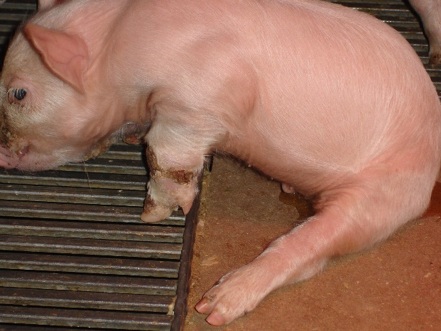The technicians notes
This section aims to offer a technical and practical vision on current issues on any of the productions. From pathology to handling, from a technical perspective and also from a production outlook.
Likewise, it will become a site to expose real clinical cases with practical solutions that our readers and technicians have considered a public interest in disclosure.

Swine dysentery is caused by a spirochete called Brachyspira that causes severe inflammation in the large intestine producing bloody and mucous diarrhea.
Swine dysentery is caused by a group of strongly beta hemolytic spirochete called Brachyspira (previously called Serpuline or Treponema) hyodysenteriae. These organisms causes severe inflammation in the large intestine producing bloody and mucous diarrhea.
The disease is frequent between 20 and 100 kg, but severe cases occur occasionally in sows and their piglets.

INFLUENCE OF PARTICLE SIZE AND PRESENTATION OF FEEDS IN SWINE FEEDING
The smaller the particle size, the greater the digestibility of the nutrients and therefore a better Conversion Rate (CR) and a better Average Daily Gain (ADG).

PORCINE STREPTOCCUS. Its prevention with substitutes of amoxicillin: Lauric Acid?
The natural habitat of this microorganism is the respiratory tract (nasopharynx) and to a lesser extent in the digestive and genital tracts. It has also been isolated in dogs, horses, cats, ruminants and birds, which together with the possible reservoir of flies which can survive up to a week, complicates their epidemiology. It seems a more than accepted hypothesis that the use of lauric acid seems to drastically reduce the intestinal load of this bacterium at fecal / intestinal level and therefore its feco-oral transmission and subsequent nasopharyngeal multiplication.

RECOMMENDATIONS FOR THE CONTROL OF COLIBACILAR DIARRHEA (COLIBACILOSIS) AFTER THE WITHDRAWAL OF ZINC OXIDE
Zinc Oxide has been a great ally for pig farmers to date, since its high power to control the diarrhea produced by the Escherichia coli bacteria , guaranteed peace of mind at critical times when diarrhea occurs, such as during weaning and when entering the fattening phase.
Current European environmental pressure points to Zinc as a potentially toxic pollutant, additionally, there are studies that hold it responsible for the development of resistance to the use of antibiotics in infections due to Staphyloscoccus Aureus. This indicates that the withdrawal of Zinc Oxide will be effective shortly.
Good intestinal health and good handling of animals and facilities are the most effective measures against the fearsome diarrhea caused by E.coli.



